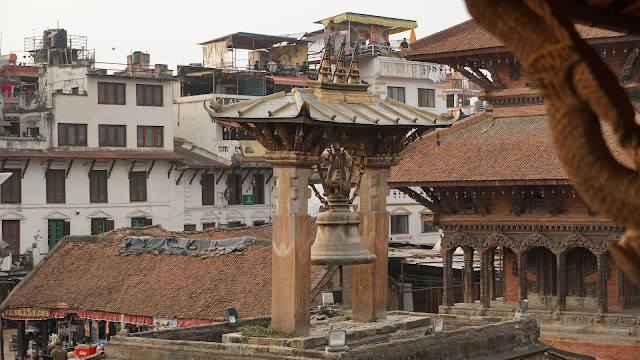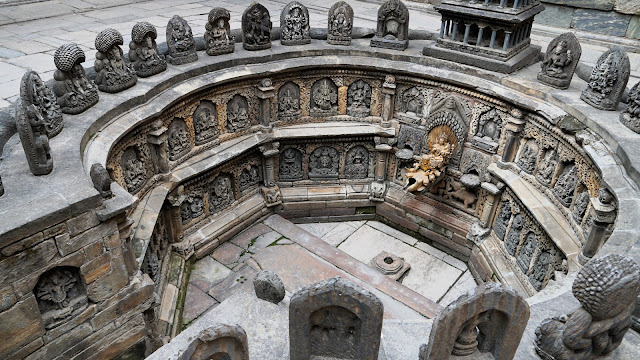After checking in to the guesthouse in Kathmandu, itinerary for day one was Patan.
Patan, also known as 'Lalitpur' is the second major city of Nepal, after Kathmandu. Both cities are separated by the river Bagmati. The original dwellers of Patan are known as Newars and speaks Newari, a member of the Tibeto-Burmese Language family.
Patan is the city's modern name which was derived from a Sanskrit word, 'pattan' which means 'city'. On the other hand, the other name, Lalitpur means 'city of art'. Patan is the home to the valley's finest craftsmen.
Getting to Patan
By van/minivan: I stayed in Thamel near Ratna Park, which is a bus hub. If you are staying near there too, most of the vans going towards Jawalakhel will get you to Patan. Get off the van at Labim Mall and walk to Patan Durbar Square from there.
By taxi: I read that one way taxi ride will cost around NPR 500 from central Kathmandu and get you to Patan in about 15 minutes.
By foot: I decided to walk to Patan, and it took about 1 hour 15 minutes from the guesthouse I stayed at to Durbar Square.
 |
| Crossing the bridge |
Patan Durbar Square
I had half a day in Patan and time was spent at Patan Durbar Square. Entrance fee NPR 1000 including entry to the Patan Museum. Tickets came in the form of 1 entrance ticket and a tourist entrance pass that I was told needed to be displayed so that the guards know that the visitors have paid. I was also given a map and a booklet on the attractions around Patan.
Patan Durbar Square is declared as one of the UNESCO World Heritage Site and located in the heart of the city. It was once the palace of the kings in Patan.
Keshav Narayan Chowk, one of the courtyards, has been converted into a bronze artifact museum.
The other popular courtyard is the Sundari Chowk. It houses a sunken bath of Tusha Hiti and showcasing the exquisite woodcarvings and sculptures of stone and metal. Tusha Hiti is a structure that features an ablution spout adorned with stone carvings and a bronze spout that features the Hindu gods Vishnu and Laxmi on a Garuda, the mythical bird Lord Vishnu rides on.
 |
| Bhandarkhal Water Tank |
Patan Museum
The Patan Museum is located within the Patan Durbar Square. The exhibition in the museum covers Nepal's history, culture and religion. On the top floor of the museum, there are seats overlooking the square.
 |
| Photo taken from Patan Museum top floor #1 |
 |
| Photo taken from Patan Museum top floor #2 |
 |
| Photo taken from Patan Museum top floor #3 |
Not sure how I managed to spend all the time in Patan just at the square. By the time I was ready to make a move out of Durbar Square, the sun was setting. I had Bara (lentil pancake) for dinner. I'll post up a separate post on food.
On my return journey back to Kathmandu, I walked back to Labim Mall area and waited at one of the bus stop. I can't read Nepali and wasn't sure if I was waiting at the right stop. I asked one of the locals there and she was extremely helpful. Coincidentally she was also heading back to Ratna Park so we got on the same minivan and off at the same stop. She even pointed out the most straightforward way to walk back to Thamel before walking to the next stop to get her next ride. I paid NPR 20 for my ride.
Side note: Spring in Melbourne is when hay fever happens...








